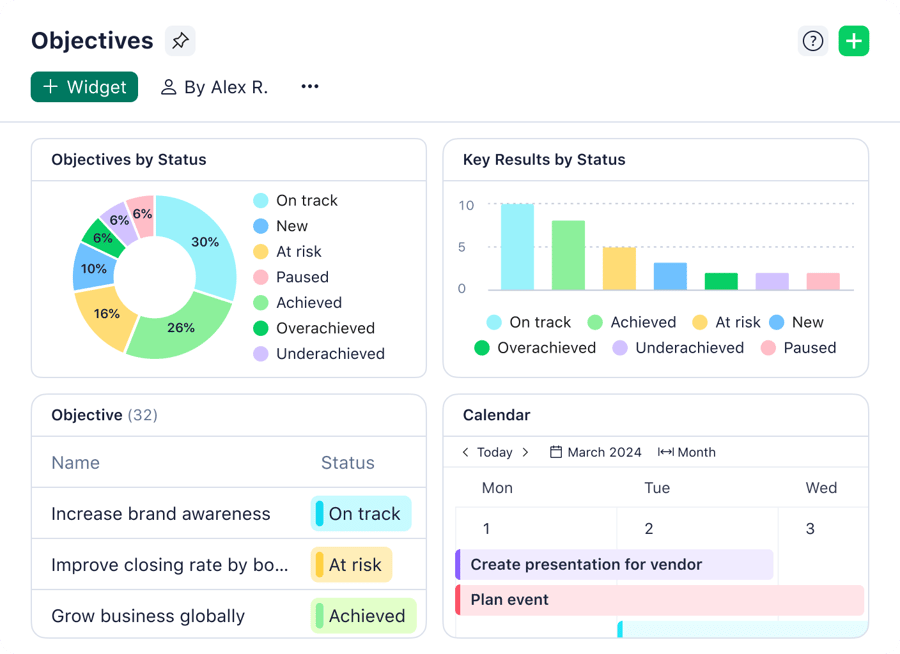You know all those individuals or groups with a stake in your project’s outcome? These are your stakeholders. And knowing how to engage your stakeholders can make or break your projects.
You might frequently ask yourself these questions:
- How can I ensure my stakeholders are actively involved in my project?
- What strategies can I adopt to make my stakeholders champion my project’s cause?
- How can I identify stakeholders who need to stay engaged throughout the project life cycle?
Don’t go too far. In this article, you will have answers to these questions.
We will discuss how to use the stakeholder engagement assessment matrix and how powerful work automation software like Wrike can help you manage your stakeholder engagements. Keep reading to learn how to drive your project forward with everyone on board!
Get actionable insights on your stakeholders with Wrike — start your free trial now.
Why is stakeholder engagement important?
Stakeholder engagement is the dynamic and ongoing process of identifying, involving, and addressing stakeholders’ needs and concerns throughout a project’s life cycle.
Stakeholder engagement helps to:
- Ensure the perspectives, knowledge, and concerns of stakeholders are taken into account when making decisions
- Uncover hidden risks, opportunities, and innovative ideas that might otherwise go unnoticed
- Build trust and credibility between team members and stakeholders
- Promote collaboration and cooperation among different stakeholders
Let’s say you’ve got a stakeholder who’s not on board with your project. Maybe they’re pushing back on changes, or they’re just not that into the project. First up, don’t panic! Find out what’s bugging them. Is it the fear of the unknown? Are they worried about the impact on their team? Once you’ve got a handle on their concerns, address them head on with facts.
What is the stakeholder engagement assessment matrix?
The stakeholder engagement assessment matrix is a framework or visual tool that helps assess and categorize stakeholders based on their level of interest and influence. It provides a structured approach to understanding stakeholder dynamics and tailoring engagement strategies accordingly.
Let’s say you’ve got dozens of people who matter to your project or company — these are your stakeholders. Now, not everyone needs the same attention for a particular project, right? This matrix helps you figure out who requires your focus the most.
Trust me, you don’t want to spend all your time on someone who doesn’t affect your project’s success. Also, it’s a heads-up on who might throw a spanner in the works or, on the flip side, give you a boost.
Benefits of the stakeholder engagement assessment matrix
The stakeholder engagement assessment matrix helps to:
- Allocate resources effectively to prevent the waste of time and resources on stakeholders who may have minimal impact on the organization’s goals or outcomes
- Flag potential risks and opportunities associated with stakeholders, allowing organizations to manage their relationships proactively
- Promote transparency and accountability by involving stakeholders in the decision-making process
Global tech companies like Sony Pictures Television and Siemens Smart Infrastructure and even retail businesses like Gwynnie Bee use Wrike’s work management platform to keep track of their stakeholders.
For example, with Wrike, you can create an analytics board to reflect your business objectives and note your stakeholders’ interests and influence levels. You can also set up automated reminders to reach your key stakeholders, keeping the conversation going with the right people at the right time.

How to use the stakeholder engagement assessment matrix
Now that we have a solid understanding of the matrix and its benefits, let’s explore the step-by-step process of using it effectively.
1. Identify your stakeholders
First up, outline who has a stake in your project. Stakeholders aren’t just your team members or the big bosses; they’re anyone who’s affected by your project. So, cast your net wide.
How do you find them? Start with your project’s scope and branch out. During the stakeholder mapping exercise, it’s important to consider the obvious stakeholders (such as customers and investors) as well as those who may have indirect or secondary interests in the project (such as the government). Your list might also include industry associations, regulators, suppliers, community or advocacy groups, and even competitors. Get them all on a list — no one’s too big or too small at this stage.
You can even use a Wrike custom view, like the Table view, to present your stakeholders in a structured format.
2. Assess stakeholder interests and influence
Now that you’ve got your list, it’s time to figure out what makes each stakeholder tick and how much weight they throw around. You’re looking for clues on what each stakeholder expects from your project and how they could shape its course.
Ask yourself:
- What are their interests regarding your project?
- Are they looking for efficiency, profit, or maybe compliance?
- What level of influence do they wield?
Create a dashboard in Wrike and add separate widgets to categorize stakeholders into four quadrants:
- High influence/high interest
- High influence/low interest
- Low influence/high interest
- Low influence/low interest
This categorization helps determine the appropriate engagement strategies for each stakeholder group.

3. Develop engagement strategies
You’ve identified your stakeholders and their power moves. Now what? It’s strategy time! Tailor your approach to each stakeholder based on their interest and influence levels.
For the high-influence, high-interest folks, you want regular updates. Keep them in the loop and actively involved. For those with less skin in the game but who could sway things, periodic updates and check-ins work great. And for the lower tiers? Keep them informed for major updates — they might not be on the front row, but they’re still part of the audience.
Organizations can opt for more passive engagement strategies for stakeholders with low interest or influence, such as keeping them informed through newsletters or providing opportunities to provide feedback when needed.
How to overcome challenges in stakeholder engagements
Stakeholder engagement, while beneficial, has its challenges. One common challenge is stakeholder resistance or skepticism. Some stakeholders may view engagement efforts with caution or as lacking sincerity.
Another challenge is balancing competing stakeholder interests. Different stakeholders may have conflicting goals or priorities, making it challenging to find common ground.
Here are ways you can overcome these challenges:
- Recognize all your stakeholders from the start.
- Make sure to communicate openly and frequently.
- Be honest about what can be achieved and by when.
- Encourage stakeholders to share their thoughts and concerns.
- Be open to changing your approach based on stakeholder feedback.
- Regularly showcase the progress and benefits of the project to stakeholders.
- When disagreements or conflicts arise, address them directly and constructively.
How Wrike can boost stakeholder engagement
From the big boss upstairs to the clients waiting eagerly on the sidelines, stakeholders can have a major influence on your projects. Managing all these people shouldn’t be a hassle — especially when you can easily streamline all your workflows in a platform like Wrike. You see who’s engaged, who needs a nudge, and the impact of every interaction in one seamless flow.
When it’s time to gather feedback, you’re not casting a wide net and hoping for the best. You’re using Wrike’s custom request forms, which allow you to request feedback from your stakeholders and receive it directly in Wrike.
Matt Andrews, Marketing Campaign Manager at Aerotek, says:
“Rather than a call or email resulting in a longer call or meeting, they now go to Wrike and fill out a very robust request form. When a request comes through, it triggers the creation of a job that your team is going to work on from start to finish.”
What’s more, Wrike’s real-time communication, including @mentions and live editing, makes it easy to quickly touch base with your stakeholders rather than getting lost in email threads. And when you need feedback on a particular file or asset, you can opt for the proofing function and set up automatic approvals for relevant stakeholders.
So, the next time you’re gearing up for a project and want to create a space where every voice is heard, every concern is addressed, and everyone is part of the story, use Wrike to centralize all your work.



